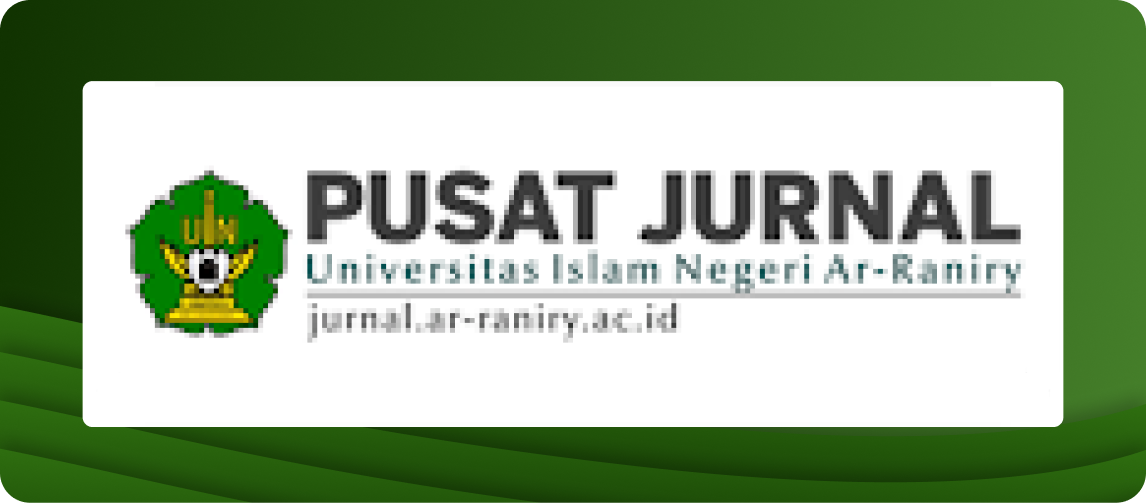Child Marriage in Kabang, South Yala, Thailand: Islamic Family Law Perspective
DOI:
https://doi.org/10.22373/ujhk.v6i2.8699Keywords:
Child Marriage, South Thailand, Islamic Family LawAbstract
This research examines the impact of underage child marriage in Kabang, South Yala Region, Thailand. This is an empirical legal research method analyzed from the Islamic Law perspective. Interviews and document analysis were the methods of data collection used in the study, by which community leaders in Kabang, South Yala Region, Thailand who were involved in the marriage of underage children were interviewed. This research reveals that the factors causing the marriage of underage children in Kabang are: economic, pre-pregnant, educational, and environmental factors. Additionally, the study finds that marriages between minors will inevitably end in divorce, burden parents, and have a detrimental effect on one's health. Consequently, this study recommends that those immediately accountable for this case the village chief, the priest, the parents or guardians, the intellectuals in the community, and the youth—should always take precautions to protect themselves and refrain from marrying when underage. Islamic family law views underage marriage as incompatible with the goal of marriage, which is to establish a sakinah mawaddah wa rahmah (happy) family. Underage marriage has more negative effects than positive ones; it is bad for the individual, the family, and the community, and it can even destroy the nation-state and the entire country.References
Journals and Books
Al-Asqallani, Ibnu Hajar, Kitab Bulughul Maram, Jakarta: Naura, 2017.
Amberi, Mariani, “Efforts to Prevent Child Age Marriage in The Study of Islamic Legal Philosophy and Indonesia Positive Law,” Samarah: Jurnal Hukum Keluarga dan Hukum Islam 7, No. 1 (2023). DOI: http://dx.doi.org/10.22373/sjhk.v7i1.12404.
Ansori Ansori, “Qawā’id Fiqhiyyah as Islamic Epistemology and Its Application at Marriage Law in Indonesia,” JURIS: Jurnal Ilmiah Syari’ah 22, No. 1 (2022). DOI: http://dx.doi.org/10.31958/juris.v21i1.5529.
Departemen Agama RI., Al-Qur’an dan Terjemahan, Jakarta: Daus Sukses Mandiri, 2012.
Departemen Pendidikan dan Kebudayaan, Kamus Besar Bahasa Indonesia, Jakarta: Balai Pustaka, 1994.
Djawas, Mursyid, et.al., “Creating Family Resilience in Indonesia: A Study of Marriage Guidance Program in Aceh and South Sumatera,” al-Ihkam: Jurnal Hukum dan Pranata Sosial 17, No. 1 (2022). Doi.org/10.19105/al-lhkam.v17i1.6150.
Ghozali, Abdul Rahman, Fiqh Munakahat, Jakarta: Kencana, 2012.
Hasan, Mustofa, Pengantar Hukum Keluarga, Bandung: Pustaka Setia, 2011.
Joll, Chris, “Malay Exiles in Central Thailand: Revisiting the cultural geography of Islam in Thailand and the Malay world's Northern Diasporas,” Conference: KITA Discourse Series 4 (2022).
Lathifah, Anthin, et.al., “Problems with The Islamic Legal System Regarding Child Marriages in Indonesia During the Covid-19 Pandemic Period,” Ijtihad: Jurnal Wacana Hukum Islam dan Kemanusiaan 22, No. 2 (2022). DOI: https://doi.org/10.18326/ijtihad.v22i2.155-176.
Mahamatayuding, Samah, et.al., “Muslim Family Law in Southern Thailand: A Historical Overview,” Journal of Muslim Minority Affairs 37, No. 3 (2017). DOI:10.1080/13602004.2017.1379694.
Mappiare, Andi, Psikologi Remaja, Surabaya: Usaha Nasional, 1982.
Mannan, Abdul, et.al., “The Expansion of Islam in Pattani, South Thailand: A Historical Analysis,” Journal of Al-Tammadun 17, No. 1 (2022). DOI:10.22452/JAT.vol17no1.7
Marzuki, Peter Mahmud, Metode Penelitian, Jakarta: Kencana Prenda Media, 2005.
Musyarrafa, Nur Ihdatul and Subehan Khalik, “Batas Usia Pernikahan Dalam Islam; Analisis Ulama Mazhab Terhadap Batas Usia Nikah,” Jurnal Shautuna 1, No. 3 (2020). http://103.55.216.56/index.php/shautuna/article/view/15465.
Nurdin, Ridwan and Sufrizal Sufrizal, “Formal Acceptance of the Marriage Age Exception in the KUA Kluet Timur,” Media Syariah: Wahana Kajian Hukum Islam dan Pranata Sosial 25, No. 1 (2023). DOI: http://dx.doi.org/10.22373/jms.v25i1.14006.
Rohanee, Machea, et.al., “Children’s Protection in The Issue of Hadhanah Based on Islamic Family Law and The Law of Thailand,” Global Journal Al-Thaqafah 6, No. 2 (2016). DOI:10.7187/GJAT11520160602.
Rizki, Darlin, et.al., “Maqasid Sharia Perspective in Changes the Marriage Age Limits for Women According to Law Number 16 of 2019,” al-Istinbath: Jurnal Hukum Islam 7, No. 2 (2022). DOI: http://dx.doi.org/10.29240/jhi.v7i2.4016.
Saleh, Juwaini, et.al., Marriage Guidance Towards Family Resilience in Aceh: A Study of Islamic Law Philosophy,” Samarah: Jurnal Hukum Keluarga dan Hukum Islam (2022). DOI: http://dx.doi.org/10.22373/sjhk.v6i2.12448.
Sanurdi Sanurdi, “Islam di Thailand,” Tasamuh: Jurnal Studi Islam 10, No. 2 (2018). DOI:10.32489/tasamuh.42.
Sarong, Hamid, Hukum Perkawinan Islam Di Indonesia, Banda Aceh: PeNA, 2010.
Supriyadi, Dedi, Perbandingan Hukum Perkawinan, Bandung: Pustaka Fikriis, 2011.
Undang-Undang (Hukum Perdata Negara Thailand) Tahun 1992 M.
Interviews
Interview with Abdunwaheng Waenuseng, the Imam at Masjid Lalae on Kabang, Yala Selatan, Thailand, December 10, 2020.
Interview with Kuyi’ Tuwaeputik, the Imam at Masjid Banan Dama in Kabang, Yala Selatan, Thailand, December 10, 2020.
Interview with Machitah Maning, the community leader at Moyi in Kabang, Yala Selatan, Thailand, December 10, 2020.
Interview with Sulaiman Kadee, the Imam at Masjid Lelatak in Kabang, Yala Selatan, Thailand, December 10, 2020.
Downloads
Published
Issue
Section
License
Authors who publish in El-Usrah: Jurnal Hukum Keluarga agree to the following terms:
Authors retain copyright and grant the journal right of first publication with the work simultaneously licensed Attribution-ShareAlike 4.0 International (CC BY-SA 4.0) that allows others to share the work with an acknowledgment of the work's authorship and initial publication in this journal.
Authors are able to enter into separate, additional contractual arrangements for the non-exclusive distribution of the journal's published version of the work (e.g., post it to an institutional repository or publish it in a book), with an acknowledgment of its initial publication in this journal.
Authors are permitted and encouraged to post their work online (e.g., in institutional repositories or on their website) prior to and during the submission process, as it can lead to productive exchanges, as well as earlier and greater citation of published work. (See The Effect of Open Acces)

















